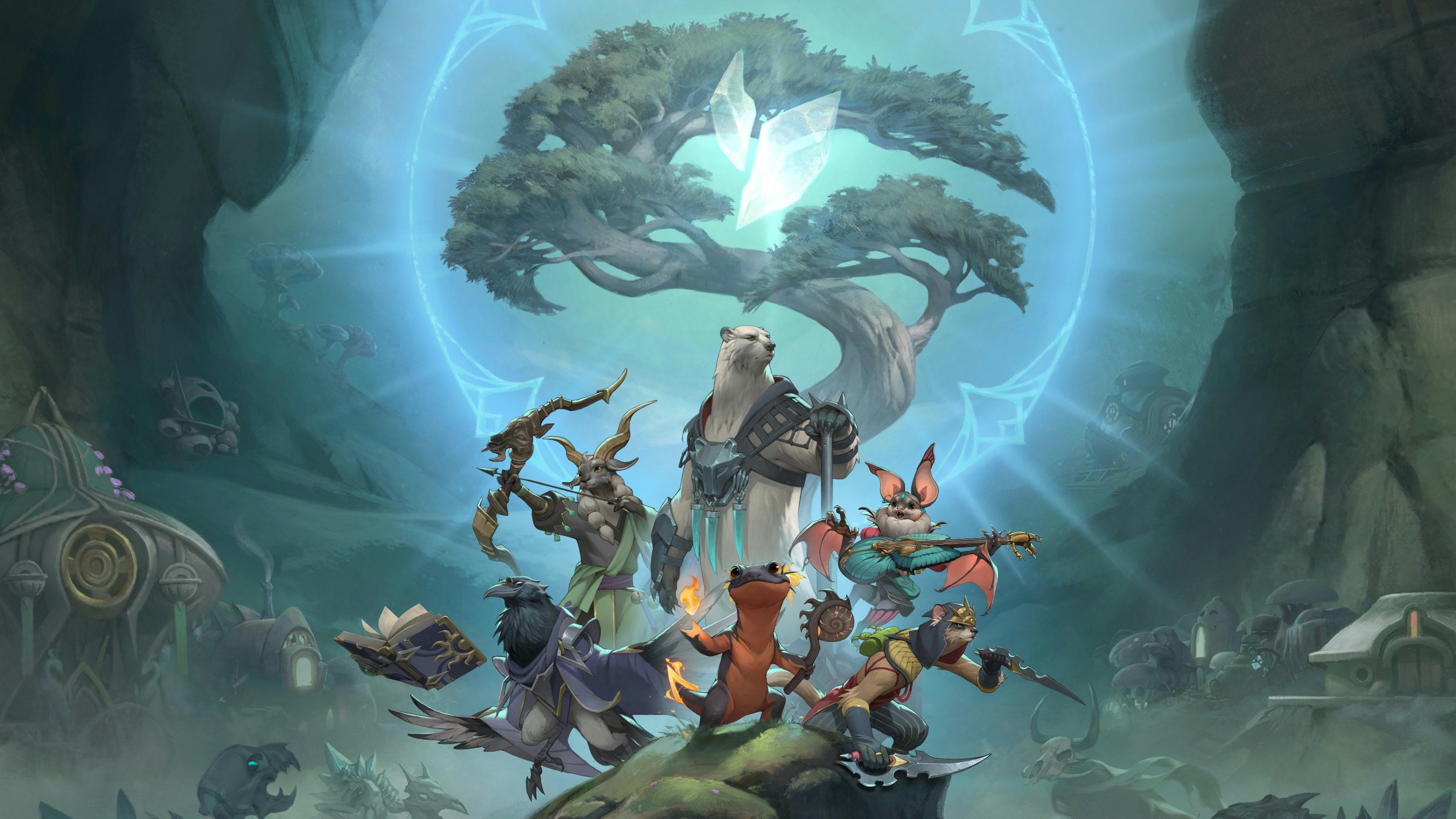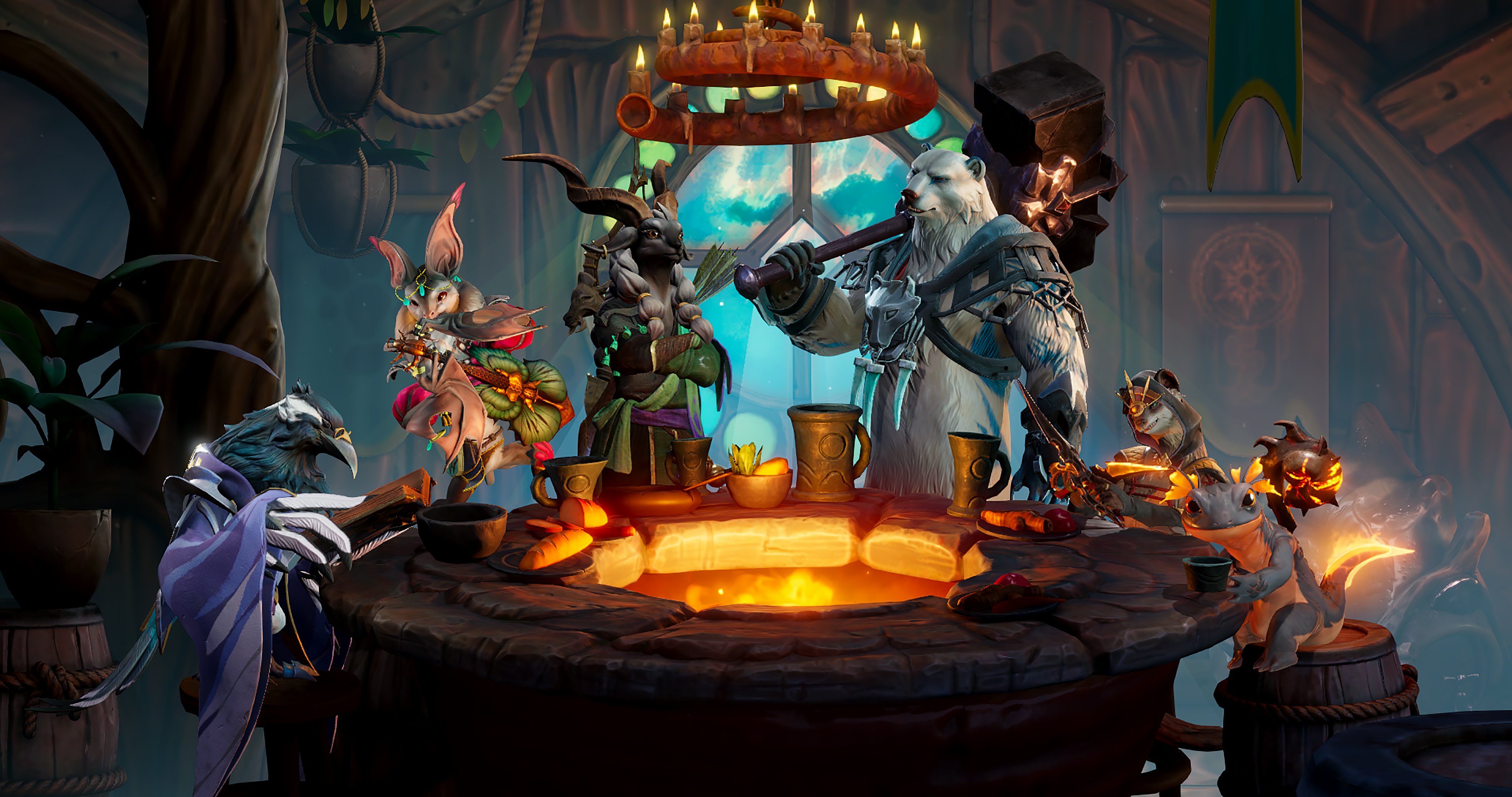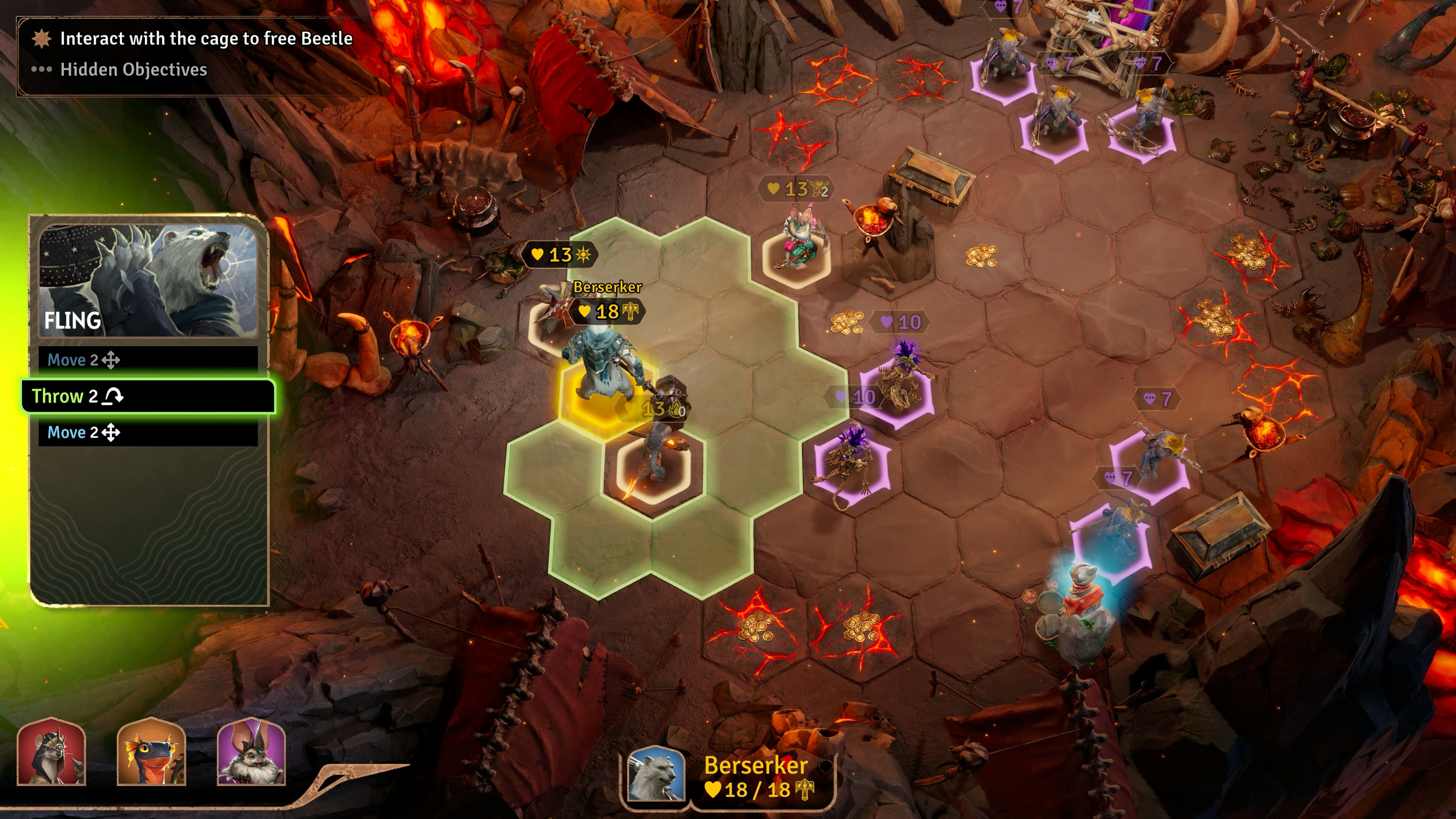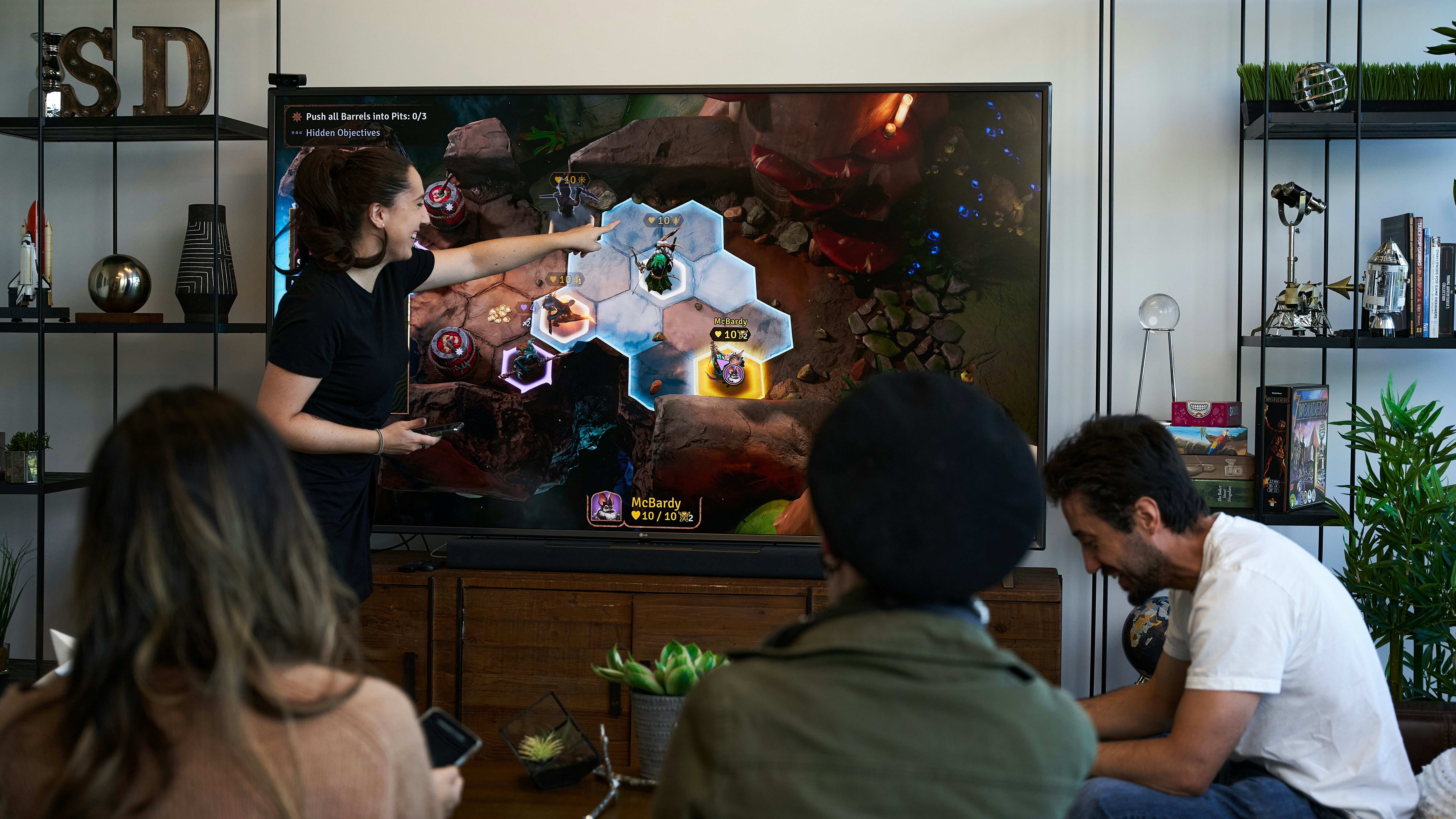
A bat, a salamander, and a polar bear walk into a bar. That’s how my preview of Sunderfolk, a new multiplayer tactical RPG from developer Secret Door, began. Starting your adventure in a tavern is a common trope of the tabletop games that inspired Sunderfolk, and according to game director Erin Marek, it’s just one of many nods to the medium that players will find in the upcoming release, set for PC and consoles in 2025.
Far more importantly than its nods and references, though, Sunderfolk borrows from tabletop RPGs and board games in how it’s meant to be played. A multiplayer-only game for two to four players, Sunderfolk can be played online — that’s how Secret Door employees who work remotely most often play, in fact — but it’s designed with couch co-op in mind. In that ideal setup, Sunderfolk features a main screen that shows the battle you’re playing out or the town you’re exploring, while each player controls their character with a smartphone.

You don’t build your own character in Sunderfolk, instead choosing from a selection of anthropomorphic animals each with their own class. My initial party consisted of a bat bard, a polar bear berserker, and a salamander pyromancer, but there are six characters currently in the game. The decision to make its characters all animals wasn’t Secret Door’s first idea, and it took some time to land on their final designs. The studio flew me to Santa Monica, CA, to preview roughly three hours of the game.
According to Marek, the expressive art of Sunderfolk’s characters serves multiple purposes. The type of animal chosen for each class hints at how they function (like a sneaky weasel serving as the party’s rogue). Secret Door also decided that newcomers to fantasy games might be able to project themselves onto an animal avatar where a traditional knight in armor might be less approachable.
Secret Door aims to make Sunderfolk enjoyable for people who aren’t typically fans of tabletop games. That’s also how Secret Door settled on the game’s combat system, which has each player draw a single card from a hand of three to comprise their entire turn.

“It's a very easy to grok design for folks who maybe haven't played board games,” studio head Chris Sigaty said. “The card walks you through step by step what you need to do, and you don’t have a multitude of options that can be overwhelming for new players.”
The game’s strategy comes not just from your choice of cards, but from talking to your party members. A single card might let you move three spaces, attack, then teleport away, or any number of other combinations of actions, including pushing and pulling other characters around the board or granting buffs and debuffs. You’re free to skip any of the actions listed on your card, but you can’t change their order. Because you’re only ever seeing your own abilities, communicating with your party is essential. What might look like a weak card can suddenly become powerful when combined with your allies’ abilities, like when I was able to force one enemy to walk through a wall of fire created by a fellow player, which then brought them in range for our third party member to finish them off with a hammer strike.
The game feels more Gloomhaven than Dungeons & Dragons — heavy on combat and light on role-playing, with varied objectives like guiding NPCs to safety to keep encounters feeling fresh. At least for the few hours that I played, Sunderfolk takes place almost entirely in battle, with quick stops in town to talk to NPCs, outfit your party with new gear and cosmetic options, and pick your next quest before heading out.

“We’re trying to leave space for role-playing without enforcing it,” Marek says. “Some players can be turned off by role-playing, but we want to make sure there are opportunities for that for players who want to dive in.”
Marek points to the ability to name certain objects and even enemies in the world, which will retain those names throughout the campaign.
While Secret Door is focused on making Sunderfolk playable for as wide a range of people as possible, Marek and Sigaty also acknowledge there’s more work to be done. The game’s phone-based control scheme could be limiting to some players, and Marek says the studio is looking at alternate control methods, but hasn’t implemented them yet. To more directly address accessibility, Sigaty says Secret Door worked with AbleGamers, an organization dedicated to improving access to games for disabled players.

Secret Door is a part of Dreamhaven, a company started by several ex-Blizzard developers, including former CEO Mike Morhaime. Just as they aim to make Sunderfolk welcoming for everyone, the developers at Secret Door are working to leave behind Blizzard’s reported culture of workplace toxicity.
“We’re focusing on creating an environment that allows people to pursue their creative endeavors,” Sigaty said in response to a question on how Dreamhaven is trying to avoid building a similar environment. “So we’ve spent a lot of time on diversity, equity, and inclusion, and had guest speakers and trainers come in.”
All of Secret Door’s efforts have made Sunderfolk a game that looks about as friendly and approachable as a relatively complex tactics game can be. My own experience with similar games certainly makes me a more receptive audience than someone coming in cold, but it’s easy to imagine explaining how the game works to a non-gaming friend in just a few minutes. And in its intended couch co-op configuration, Sunderfolk works wonderfully. I loved being able to turn to my fellow players and work out the best combination of actions, then cheering when our string of decisions ended in triumph.
But how Sunderfolk will fare in a more natural environment is yet to be seen. Without a team of the game’s developers to explain it, will it really be that easy to get casual players on board? And outside of the perfect local co-op setup, will the game’s focus on teamwork be as enchanting? No matter how easy the game is to teach, and how engaging it is once you’re in, it’s hard to imagine players breaking it out at a party like they would a deck of cards or even a social game like Jackbox, as the developers are aiming for. I’m skeptical about whether Sunderfolk will hit that particular mark, but as someone on the hunt for new co-op experiences and a taste of what tabletop games can offer without all the time-consuming setup, I’d love the chance to sit down with it again.





!["[T]he First and Fifth Amendments Require ICE to Provide Information About the Whereabouts of a Detained Person"](https://images.inkl.com/s3/publisher/cover/212/reason-cover.png?w=600)

